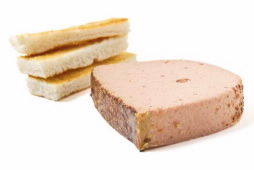FOR IMMEDIATE RELEASE
ACS News Service Weekly PressPac: November 16, 2011
The secret of the best foie gras
“Identification by Proteomic Analysis of Early Post Mortem Markers Involved in the Variability in Fat Loss during Cooking of Mule Duck ‘Foie Gras’”
Journal of Agricultural and Food Chemistry
Defying common sense, ducks that plump up less produce the finest foie gras — that rich, buttery French delicacy made from goose or duck livers and sometimes eaten as slices atop lightly toasted bread — scientists are reporting. The report appears in ACS’ Journal of Agricultural and Food Chemistry.
Caroline Molette and colleagues explain that the luscious, smooth texture and buttery taste of foie gras, a traditional French dish, comes from its high fat content. “Foie gras” translates to “fat liver” in English. To make foie gras, geese or ducks are overfed large amounts of a wet mash of corn. Their livers balloon up to about 6-10 times their normal size and are packed full of fat. Heavier livers generally lose more fat when they are cooking (the sign of a bad foie gras), but this fact doesn’t explain all of the differences in quality from one fatty liver to another. To find out why some livers retain fats during cooking while others don’t, the scientists analyzed liver proteins in overfed ducks.
They found that higher quality livers came from ducks whose livers were still active, making and storing fats. However, lower quality livers came from ducks in a more advanced stage of a condition termed liver steatosis in which cells are struggling to cope with the high fat levels.
“These results are in agreement with practical observations showing that a reduced duration of over feeding improves the technological yield of duck fatty livers by reducing the fat loss during cooking,” say the scientists.
The authors acknowledged funding from the French National Institute for Agricultural Research, CIFOG and Region Midi-Pyrenees.
![]()

Contact
Science Inquiries: Michael Woods, Editor, 202-872-6293
General Inquiries: Michael Bernstein, 202-872-6042


